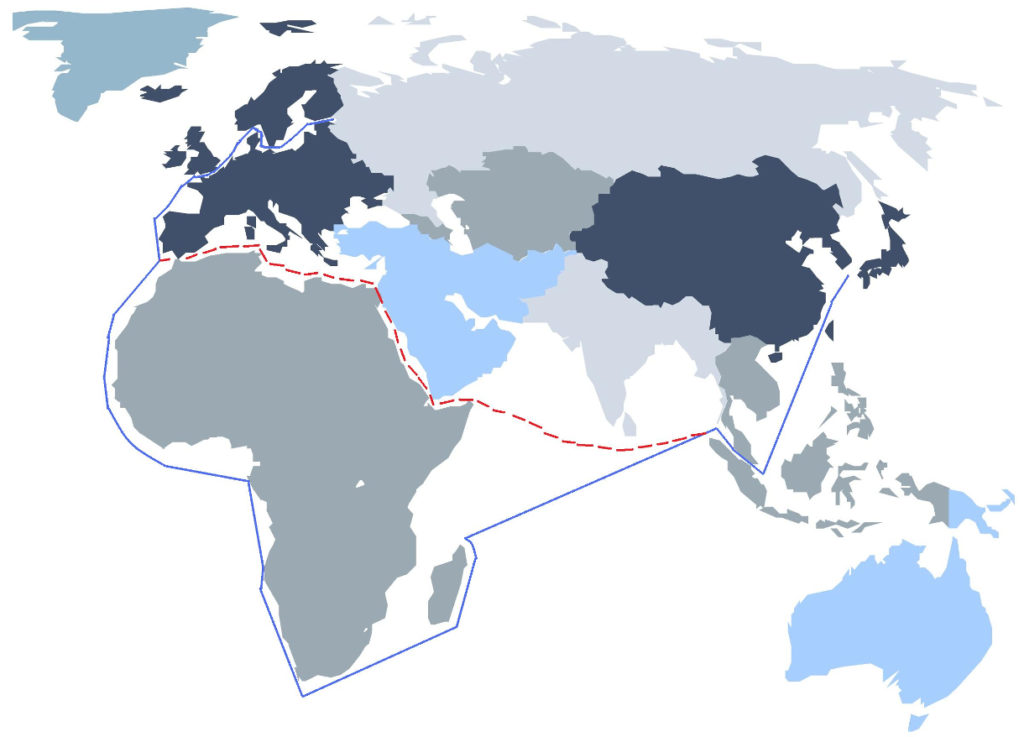On May 15, 1904 on the waters off Port Arthur (now Lushunkou, China), the Japanese battleship Hatsuse struck two mines and sank with the loss of 496 crew. Another Japanese ship Yashima also sank after hitting two mines. The incident was part of the ongoing Russo-Japanese War (February 1904-September 1905) for control of southern Manchuria and Korea.

Since the outbreak of the war, the Japanese ships had been laying siege on the strong Russian outpost of Port Arthur. The Russian fleet in Port Arthur twice attempted to break out (April and August 1904) but was forced back by the strong Japanese naval presence. On the other hand, the Japanese ships were wary of entering Port Arthur because of the powerful Russian shore batteries. Ultimately, the Japanese captured Port Arthur in January 1905, ending a nine-month siege. Port Arthur’s fall demoralized the Russian Army in Manchuria, and shocked the Russian population.
At the start of the war, the Japanese took control of the Korean Peninsula, meeting no Russian opposition. The Japanese then also advanced into southern Manchuria up to Mukden. Subsequently, Japan was beset with many political and economic problems at home. In Manchuria, the Japanese Army was experiencing serious logistical problems and so decided to abandon plans to advance further north.
The most significant naval engagement of the war was the Battle of Tsushima (May 27-28, 1905), where the Japanese Navy scored a stunning one-sided victory. The Russian Second Pacific Fleet was destroyed, with 10,000 Russian sailors killed or captured, 21 ships sunk, including 7 battleships, and of the 38 Russian ships that started the voyage, only 3 managed to reach Vladivostok. Japanese losses were 700 dead or wounded, and only 3 torpedo boats sunk.

The Battle of Tsushima sent reverberations around the World – an Asian nation dealing a crushing defeat on a European power. In Russia, Tsar Nicholas II abandoned his hard-line position against Japan. On June 8, 1905, one week after the Tsushima battle, Russia agreed to negotiate an end to the war. By this time also, Russia was experiencing massive unrest (the Russian Revolution of 1905) as a result of strikes, demonstrations, peasant protests, and soldiers’ mutinies.
Meanwhile, Japan was faced with a deteriorating economy and mounting foreign debt, and also desired to end the war. The Japanese Army was experiencing logistical problems in Manchuria, and the economic problems at home could seriously undermine Japan’s ability to wage a protracted war. As early as mid-1904, Japan had sought third-party mediation to end the war. U.S. President Theodore Roosevelt agreed to act as mediator, and peace talks opened in Portsmouth, New Hampshire in June 1905.
On September 5, 1905, Russia and Japan signed the Treaty of Portsmouth, ending the war. By the terms of the treaty, Japan gained control of Korea; Russia withdrew its forces from Manchuria but retained the Chinese Eastern Railway; and the Russian lease on the Liaodong Peninsula, including Port Arthur, was transferred to Japan. Sakhalin Island was partitioned at the 50th parallel, with Japan gaining the southern portion and Russia retaining the northern side.
For Japan, the long-term effects of the war were much more favorable, as it became the supreme power in East Asia, and its status as an equal of the major European powers was strengthened. In August 1910, Japan abrogated Korea’s nominal independence (long recognized by the major powers) and annexed Korea, generating no response from the European powers. Japan then continued to expand militarily.
Japan’s victory in the Russo-Japanese War also dashed the then prevailing notion that Caucasians were military superior to Asians. Japan’s feat also gave hope to the colonized peoples of Southeast Asia (e.g. Vietnamese, Indonesians, Filipinos, etc) who were aspiring for independence from their European and American colonial masters. (For more information on the war, click here
